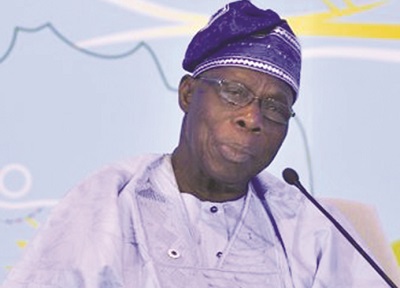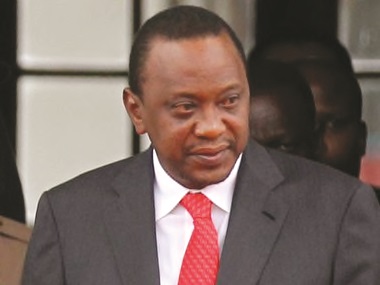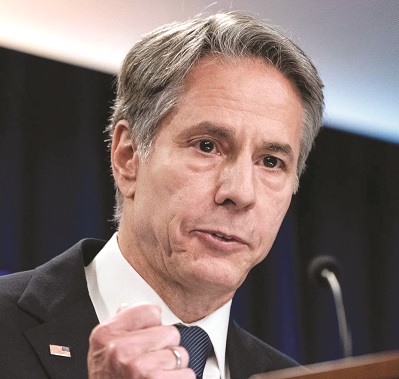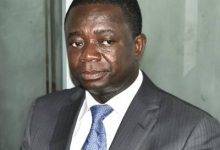
After twelve months of fighting that has caused thousands of lives and millions displaced, and thousands more faced with the grim prospect of a famine, international efforts aimed at a cessation of hostilities between Ethiopian Federal troops and Tigrayanrebel forces have been held.
US Secretary of State Antony Blinken, African Union envoy to the region, former Nigerian President Olusegun Obasanjo and Kenyan President, Uhuru Kenyatta are among the high-profile personalities tried to mediate a cease-fire in one of the world’s oldest states.
To Pan-Africanists, this state of affairs is a blot on the conscience of well-meaning, forward-looking Africans who had hoped that the historic meeting in Addis Ababa in 1963 signified a new dawn for a continent and its peoples who had long known travail and tribulation and was moving towards a brighter future with hope and optimism.
To understand how this promise was shattered, it is worthwhile to revisit that historic gathering in the Ethiopian capital in 1963 to appreciate the warnings that were issued to fellow Africans on the path to realizing our fundamental objective.
Chairman of that historic gathering, Emperor Haile Selassie I told fellow African Heads of State that: “We know that there are differences among us. Africans enjoy different cultures, distinctive values, special attributes. But we also know that unity can be and has been attained among men of the most disparate origins, that differences of race, of religion, of culture, of tradition, are no insuperable obstacle to the coming together of peoples”.
He went on to add that: “History teaches us that unity is strength, and cautions us to submerge and overcome our differences in the quest for common goals, to strive, with all our combined strength, for the path to true African brotherhood and unity”.
However, the Ethiopian Emperor cautioned that: “Above all, we must avoid the pitfalls of tribalism. If we are divided among ourselves on tribal lines, we open our doors to foreign intervention and its potentially harmful consequences. The Congo is clear proof…”.
Naturally, the Congo crisis was then raging which led to the eventual split of the Congo into Congo Kinshasa and Congo Brazzaville and the rest is history. That region has perpetually been plunged into chaos and untold suffering and instability.
The root of this present crisis can be traced to Ethiopia’s system of government. Since 1994, Ethiopia has had a federal system in which different ethnic groups control the affairs of 10 regions. The Tigray People’s Liberation Front (TPLF) – was influential in setting up this system.
When MrAbiy was appointed prime minister, he liberalised politics and removed key Tigrayan government leaders accused of corruption and repression. These moves won MrAbiy popular acclaim, but caused unease among critics in Tigray.
After months of fighting with little, or no hope in sight, the Ethiopian government declared a state of emergency last month as rebels from the northern Tigray region took control of more territory as its fighters advanced south, closer to the capital.
The rebel Tigrayan fighters’ advance towards the capital, has compelled PM Abiy Ahmed to go to the front line to perform the patriotic duty of keeping Ethiopia as one entity.
The US and UK have issued advisories, and the UN has begun what it describes as a temporary relocation of some staff. Germany’s foreign ministry said its nationals should depart on the first available commercial flights, while France urged its citizens to leave the country “without delay”.
Meanwhile, Ethiopian Olympic heroes Haile Gebrselassie and FeyisaLilesa say they are ready to go to the front line in the war against rebel forces. Just to amplify how serious the conflict is and to lovers of African progress, the prospect of Ethiopia disintegrating is something too hard to fathom. If for anything at all, Addis Ababa is Africa’s political capital.
That is why the conflict, in one way or the other, has dire consequences for the continent’s forward march. At this point, we must again revisit messages of enlightenment freely shared by the Emperor to his colleague-peer Heads of State and Government at the historic meeting.
“Africa has come to freedom under the most difficult and trying of circumstances. In no small measure, the handicaps under which we labour derive from the low educational level attained by our peoples and from their lack of knowledge of their fellow Africans.
There are those who claim that African unity is impossible, that the forces that pull us, some in this direction, others in that, are too strong to be overcome. Around us there is no lack of doubt and pessimism, no absence of critics and criticism. These speak of Africa, of Africa’s future and of her position in the twentieth century in sepulchral tones. They predict dissension and disintegration among Africans and internecine strife and chaos on our continent. Let us confound these and, by our deeds, disperse them in confusion”.
Ethiopian government has complained of a deliberate campaign by Western governments and media organisations to misrepresent the nature of the conflict. One thing is clear: they appear to exaggerate the successes of the TPLF.
While all this is going on in Africa’s political capital, major world powers including the US, China and Russia are jostling for military, political and economic influence in Africa. The continent’s mineral resources, agricultural land and strategic locations have made it a place where many nations are keen for influence.
There is more to what the eyes see, and we will be following events keenly, as we try to provide Africa’s perspective.
By Ras Levi, on behalf of the Ethiopian World Federation Inc.








